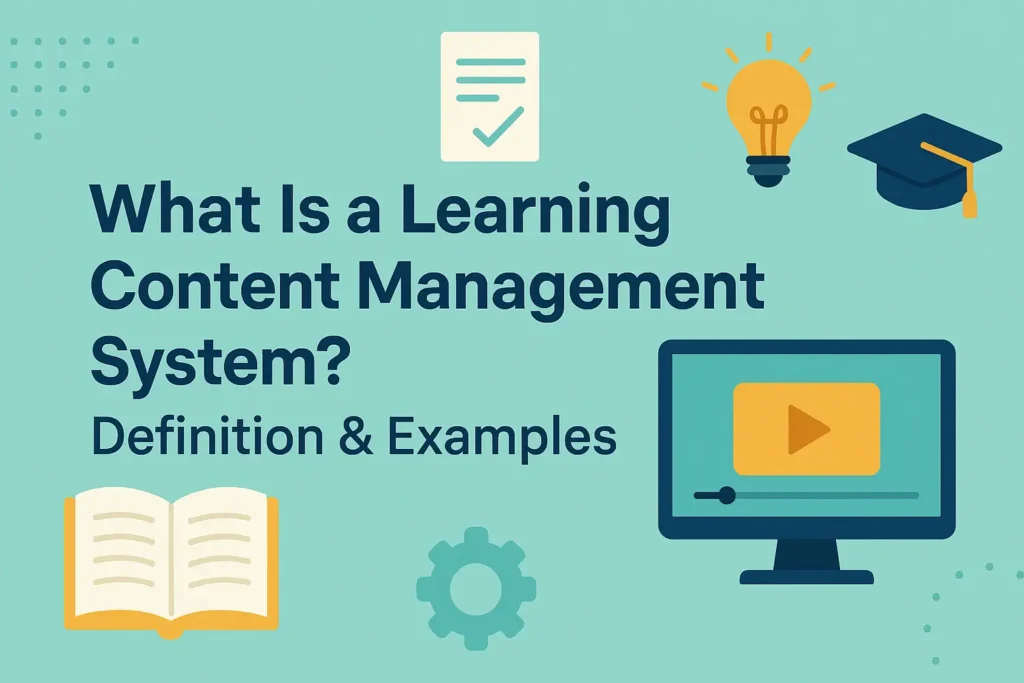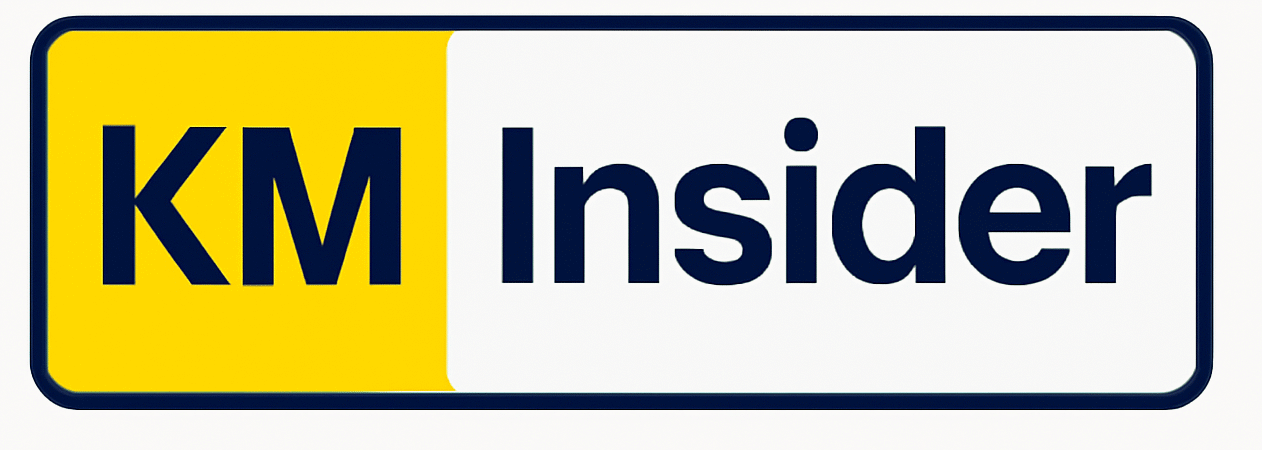In the evolving landscape of digital learning, where speed, scale, and personalization have become essential, organizations are increasingly turning to advanced tools to streamline content development and delivery. One such tool is the Learning Content Management System (LCMS)—a pivotal platform designed to manage the entire lifecycle of learning content across teams, departments, and global audiences.
While often confused with Learning Management Systems (LMS), an LCMS plays a very different role. It is not just about delivering courses—it’s about creating, managing, and optimizing the content itself. In this article, we’ll explore what an LCMS is, how it differs from an LMS, key features, benefits, and real-world examples of how enterprises use LCMS platforms to scale learning operations efficiently.

What Is a Learning Content Management System (LCMS)?
A Learning Content Management System (LCMS) is a software platform used to create, manage, reuse, and deliver learning content in various formats. Unlike an LMS, which focuses on course delivery and tracking learner progress, an LCMS is content-centric. It allows instructional designers, subject matter experts, and content developers to collaborate on creating modular learning objects that can be reused across multiple courses or programs.
LCMS Definition:
A Learning Content Management System (LCMS) is an integrated system that supports the development, management, versioning, publishing, and distribution of learning content from a centralized location. It facilitates collaborative content creation, supports learning object reuse, and enables content delivery across different formats, including SCORM, xAPI, and HTML5.
LCMS vs LMS: What’s the Difference?
Although they sound similar, an LCMS and an LMS serve different functions in the learning ecosystem. Here’s a quick distinction:
| Feature | LMS (Learning Management System) | LCMS (Learning Content Management System) |
|---|---|---|
| Primary Function | Manages and delivers training programs | Creates, manages, and stores learning content |
| Target Users | Learners, administrators, HR | Instructional designers, content teams |
| Content Creation | Limited or external | Built-in tools for content development |
| Focus | Course delivery, user tracking | Content development, reuse, and scalability |
| Reusability | Low | High (learning objects reused across courses) |
Example Use Case:
A company might use an LMS like Workday Learning to assign mandatory compliance training to employees and track completion. But it would use an LCMS like Xyleme or Kenexa LCMS to create the SCORM-compliant training content in the first place.
Key Features of a Learning Content Management System
A robust LCMS goes far beyond simple content storage. It offers a full suite of capabilities tailored to content teams. Below are the key features found in most enterprise-grade LCMS platforms:
1. Modular Content Authoring
LCMS tools break down content into reusable “learning objects” (text, video, quizzes, etc.). These can be assembled into different courses or learning paths without duplicating work.
2. Collaborative Workflow
Multiple team members can work simultaneously on content with version control, check-in/check-out, and approval workflows.
3. Multichannel Publishing
Content can be exported into multiple formats—HTML5, SCORM, AICC, PDF, xAPI, and mobile-first formats—allowing seamless delivery across platforms.
4. Metadata and Tagging
Powerful search and categorization capabilities help teams organize content using metadata, taxonomies, and tagging, which also aids in content retrieval and reuse.
5. Localization and Translation Support
Built-in tools help manage multilingual content, translation memory, and localized variants—essential for global enterprises.
6. Analytics and Reporting
Measure how content is being used, reused, or consumed to identify what’s effective and what needs optimization.
Benefits of Using a Learning Content Management System
For organizations dealing with large-scale training programs, especially across geographies and teams, an LCMS provides tangible strategic benefits.
1. Faster Content Development
With reusable learning objects and templates, content creation cycles are significantly shortened. Teams can assemble new courses in days, not weeks.
2. Scalability Across the Enterprise
An LCMS supports the consistent development and delivery of content across business units, departments, and global locations—ensuring standardization and scalability.
3. Content Reusability
Create once, reuse forever. The modular approach enables teams to reuse components across different courses, reducing duplication and content bloat.
4. Consistent Branding and Messaging
Templates and shared style guides help maintain brand voice and visual consistency across learning materials.
5. Localization at Scale
Enterprises operating in multiple regions can use an LCMS to manage content in different languages efficiently, ensuring faster localization and rollout.
6. Compliance and Version Control
Track versions of content for audit trails, compliance purposes, and easy rollback to previous versions when needed.
Real-World Examples of LCMS Platforms
1. Xyleme
Xyleme is an enterprise LCMS known for its robust authoring capabilities and multi-output publishing. It supports responsive content, localization workflows, and in-depth analytics. Many Fortune 500 companies use Xyleme to centralize content creation and support mobile and offline access.
Used By: Nielsen, VMWare, 3M
2. Kenexa LCMS (by IBM)
IBM’s Kenexa LCMS, while now part of a broader talent suite, was historically popular for managing large volumes of learning content. It enabled dynamic content reuse, workflow approvals, and scalable localization.
Used By: Large financial institutions and global consulting firms.
3. LumenVox Learning Content Studio
Focused on voice-enabled learning, LumenVox supports modular content development and AI-powered voice assessment, primarily for call center training and speech-related instruction.
4. Adobe Learning Manager (Formerly Captivate Prime)
Although primarily an LMS, Adobe’s offering has LCMS-like features such as built-in content authoring, modular reuse, and multi-format exports, making it a hybrid for smaller teams.
Used By: GE Healthcare, Publicis Sapient
When Should You Use an LCMS?
An LCMS becomes indispensable when:
- You manage high volumes of training content across regions.
- Your team includes multiple content creators and reviewers.
- You need to support multiple languages and localized content.
- You aim for efficiency in maintaining and updating training content.
- You want content that is format-agnostic and can be deployed anywhere.
Industries that benefit most from LCMS adoption include healthcare, finance, manufacturing, government, education, and software/IT—anywhere regulatory compliance, scale, and consistency are priorities.
Challenges and Considerations
Despite its benefits, implementing an LCMS is not without challenges:
- Initial Cost & Complexity: Enterprise LCMS tools are often expensive and require a well-structured implementation plan.
- Cultural Shift: Teams must adapt to a modular and collaborative content creation process.
- Training Required: Effective use demands training for content teams in instructional design principles and platform capabilities.
- Integration with LMS and Other Tools: Seamless integration with your existing LMS or HR systems is crucial to avoid content silos.
Final Thoughts
A Learning Content Management System is a critical enabler for organizations seeking to scale learning efficiently and consistently. It shifts the focus from course delivery to content strategy, allowing businesses to build modular, reusable, and globally consistent learning assets.
As digital learning becomes more adaptive and data-driven, LCMS platforms will play a central role in managing the content that fuels learning transformation. For companies serious about long-term training scalability, investing in a robust LCMS is not just a technology choice—it’s a strategic advantage.
Frequently Asked Questions
Read: 7 Core Types of Knowledge Management Systems Explained
